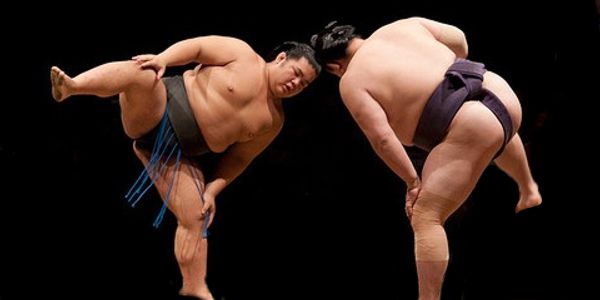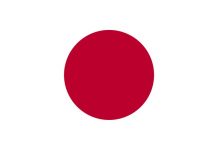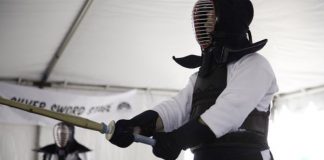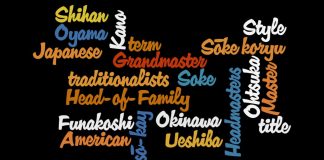Banzuke: An ordered list of men fighting up through the ranks of professional Sumo; a ranking sheet.
Basho: A sumo tournament. In a sanctioned competition, consists of seven or fifteen bouts held over a two week period.
Dohyo: The ring within the square in which Sumo is performed.
Heya: A building used to house and train rikishi. This includes sleeping accommodations, cooking facilities and training dohyo.
Hon-basho: Any of six official basho held in each odd numbered month by the Sumo Kyokai. Only these contests count in the official scores used to rank the rikishi.
Jungyo: The exhibition bashos that are held across the nation in between the regular basho schedule. These help in recruiting new rikishi to the sport and also give other people a chance to see the rikishi up close. The most extensive Jungyo is in July-August, covering the Tohoku and Hokkaido regions.
Juryo: The first of the two professional divisions of Sumo. Thirty men vie for entrance into the top, Makunouchi division.
Kachi-koshi: In a tournament, attaining the number of wins that assures a better than even percentage. Out of 15 bouts, for example, a rikishi is said to be kachi-koshi at that point where he tallies 8 wins.
Kimarite: The names given to each of the seventy winning techniques and two inadvertent methods that describe the result of a Sumo bout.
Kin-boshi: Literally, “gold star.” This is a salary incentive to Maegashira ranked sekitori to defeat Yokozuna.
Kokugikan: The Arena of the National Sport, in the Ryogoku neighborhood in southeastern Tokyo. This is the rather magnificent facility where Hon-basho, retirement ceremonies, World Amateur Championships and other events are held.
Komusubi: The rank below Sekiwake but above the Maegashira. There are typically two or three rikishi holding this rank. Most rikishi do poorly when promoted to komusubi for the first time and are demoted.
Kyokai: An official association or administration. For Sumo, the Nihon Sumo Kyokai administers the sport under the Ministry of Education.
Maegashira: The lower ranks of the Makunouchi division, numbered from one (highest) to 15 or 16. There is an east and a west position at each numbered level. The number of Maegashira ranks is adjusted so that there are a total of forty Makunouchi rikishi.
Make-koshi: The opposite of kachi-koshi. In a 7 bout tournament, having 4 losses guarantees make-koshi.
Makunouchi: Also called Makuuchi, this is the top division of Ozumo. It is comprised of the ranks of Yokozuna, Ozeki, Sekiwake, Komusubi and Maegashira.
Mawashi: The thick belt that is wrapped around a rikishi for Sumo. It is wound in such a manner that protects the genitals as well as offering a way for the combatants to grapple.
Oyakata: Stablemaster or coach. The man who trains and takes care of all wrestlers living in his stable.
Ozeki: The champion rank of Sumo. Whereas lower ranks can be attained by consistently winning, this rank must be granted by the Sumo Kyokai.
Rikishi: Literally, “strong man.” This is an all-purpose term for men engaging in Sumo.
Sansho: Any of three special prizes awarded to Makunouchi sekitori under the rank of Ozeki. These are for superior technique, superior performance and fighting spirit.
Sekitori: A rikishi who is ranked in one of the top two divisions of Sumo, who are being paid a salary.
Sekiwake: The junior champion rank of Sumo. Usually two to four rikishi hold this rank.
Sumobeya: See Heya. When referring to a specific heya, the suffix -beya may be used; instead of saying that Tosanoumi’s heya is Isenoumi, it is neater to talk of Tosanoumi, of Isenoumi-beya. It is less awkward to say, “Look, there’s Izutsu-beya” than “That heya is Izutsu.”
Torikumi: The term for an individual sumo bout, or also used to refer to the list of bouts for an entire day.
Toshiyori-kabu: A financial term, this is a license that must be purchased from the Sumo Kyokai in order to hold a position as Oyakata, or coach. There are only a limited number of these positions, each of which carries a name. Currently, these cost between two and four hundred million yen.
Yokozuna: The pinnacle of active Sumo, this is the rank of grand champion. Only 65 men have held this rank.
Yusho: The tournament title. A rikishi wins a yusho by winning more matches than any other in his division, or if two or men are tied, by being triumphant in a playoff.







